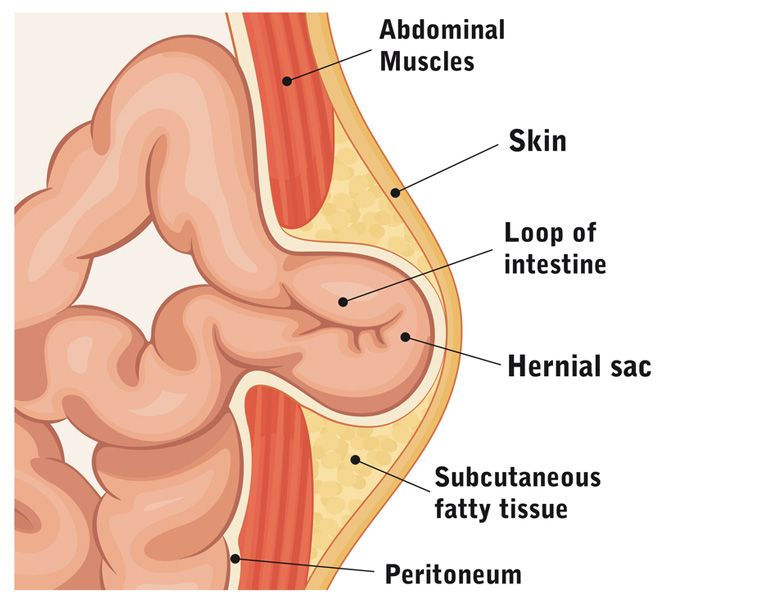What are the symptoms of an umbilical hernia?
An umbilical hernia can present with various symptoms, which include:
- Bulge or Lump: A noticeable bulge or lump near the belly button (umbilicus) is often the most common symptom. This bulge may become more pronounced when the person is standing up, coughing, or straining.
- Discomfort or Pain: There may be mild discomfort or pain around the belly button, especially when the area is touched or when engaging in physical activities.
- Tenderness: The area around the hernia may feel tender or sensitive to touch.
- Swelling: The bulge might be swollen and could potentially grow larger over time.
- Nausea or Vomiting: In more severe cases, if the hernia becomes incarcerated (trapped) or strangulated (cutting off blood supply), symptoms like nausea, vomiting, or signs of bowel obstruction may occur.
- Change in Size: The size of the bulge may vary, sometimes becoming smaller when lying down and larger when standing or exerting pressure.
If you or someone else is experiencing these symptoms, especially if accompanied by severe pain, nausea, or vomiting, it’s important to seek medical attention promptly to evaluate and manage the hernia appropriately.
What are the causes of an umbilical hernia?
An umbilical hernia occurs when part of the intestine or fatty tissue pushes through a weak spot in the abdominal muscles near the belly button. The causes can include:
- Increased Abdominal Pressure: Activities or conditions that increase pressure in the abdomen, such as heavy lifting, straining during bowel movements, chronic coughing, or obesity, can contribute to the development of an umbilical hernia.
- Weakness in Abdominal Wall: Some people are born with a natural weakness in the abdominal wall around the belly button, which can make them more susceptible to hernias.
- Pregnancy: During pregnancy, the growing uterus can put increased pressure on the abdominal wall, which can lead to the formation of an umbilical hernia. This is more common in women who have had multiple pregnancies.
- Obesity: Excess body weight can put additional strain on the abdominal muscles, leading to a higher risk of developing a hernia.
- Chronic Coughing: Persistent coughing due to conditions such as chronic bronchitis or smoking can increase abdominal pressure and contribute to hernia formation.
- Genetic Factors: A family history of hernias can increase the likelihood of developing an umbilical hernia, suggesting a genetic predisposition.
- Previous Abdominal Surgery: Surgery in the abdominal area can weaken the abdominal wall, making it more prone to hernia formation.
- Infancy and Childhood: In infants and young children, umbilical hernias are often congenital, meaning they are present at birth. The condition may resolve on its own as the child grows, but in some cases, it persists into later childhood or adulthood.
Understanding these causes can help in managing risk factors and preventing the development or recurrence of an umbilical hernia.
What is the treatment for an umbilical hernia?
The treatment for an umbilical hernia varies based on its severity and the presence of symptoms. In some cases, especially when the hernia is small and not causing significant problems, a doctor might suggest monitoring it over time. This is often the approach for infants, as many umbilical hernias close on their own as the child grows.
For more severe cases or if the hernia is causing pain or complications, surgical intervention is usually recommended. Surgery can be performed in different ways: through open surgery, where an incision is made near the hernia to push the protruding tissue back into place and reinforce the area with stitches or mesh, or through laparoscopic surgery, which is minimally invasive and involves making small incisions and using specialized instruments to repair the hernia.
In addition to these treatments, managing risk factors can help prevent the hernia from worsening. This includes avoiding heavy lifting, maintaining a healthy weight to reduce abdominal pressure, and managing chronic coughs or respiratory conditions to prevent additional strain on the abdominal wall.

Leave a Reply
You must be logged in to post a comment.